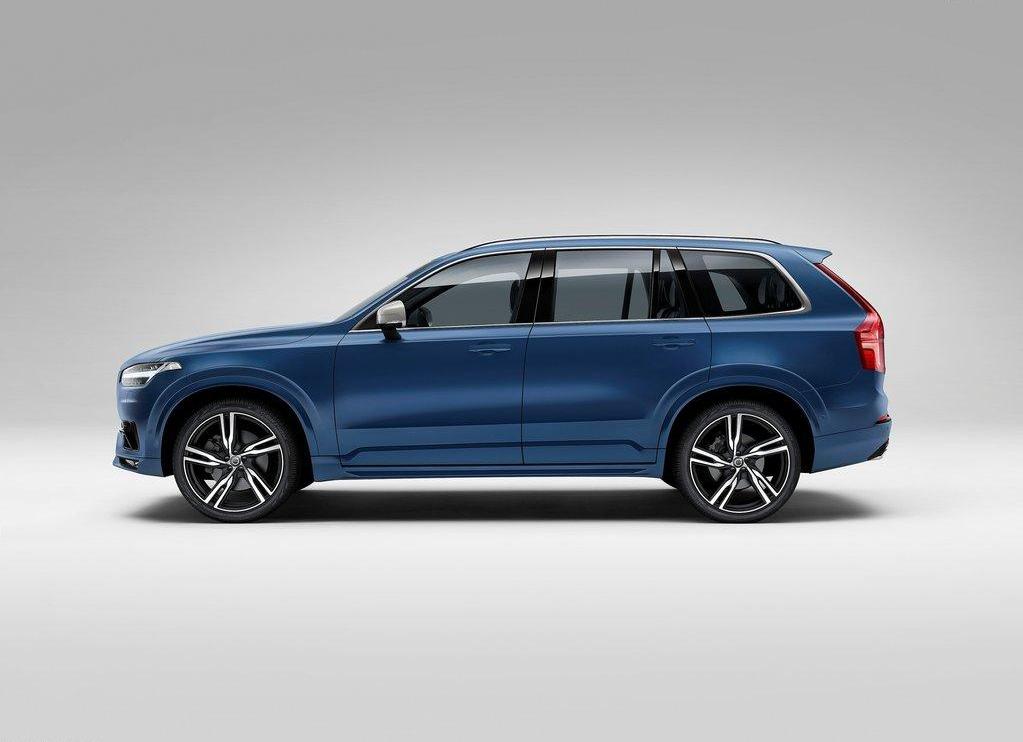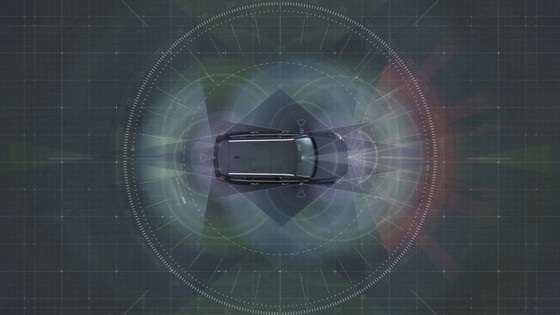Self-driving car is no more a sci-fi term these days, a handful of auto makers have already been working on it for a while. One famous example is the Mercedes-Benz F015 concept which was debuted during last month’s 2015 CES in Las Vegas.
Volvo is another auto maker that has been actively pursue this technology. Today it announced its own autonomous driving technology, called the “Drive Me project“.
Basically speaking, Volvo’s Drive Me technology is NOT something that you pick point A and point B and then the car will automatically send you to the destination. Instead, it is a system that can free you up when you are driving, only when you want the system to take over control. This system is capable of performing most daily-driving maneuvers, for example changing lanes, passing etc, and covering “most complicated scenarios, from smooth commuting to heavy traffic and emergency situations”.
In addition, operating this feature does not require a very skillful driver, instead “ordinary people in the driver’s seat” is sufficient.
The Volvo self-driving system is very robust, built on fail-operational architecture with backup systems. So you do not need to worry about sensors/electronic components failure because there is always a backup there.
To achieve this goal, Volvo has used many state-of-the-art technologies, including: sensor, combined radar and camera, surround radars, 360-degree surround vision, multiple beam laser scanner, trifocal camera, long-range radars, ultrasonic sensors, high definition 3D digital map, high performance positioning, Cloud services.
Check out the below press release to get more in-depth descriptions.
[expand title=”Click to view press release”]
| Date of issue | Feb 19, 2015 | ID: 158276 | ||
| Volvo Cars presents a unique system solution for integrating self-driving cars into real traffic
Volvo Cars presents a unique, complete system solution that makes it possible to integrate self-driving cars into real traffic – with ordinary people in the driver’s seat. “We are entering uncharted territory in the field of autonomous driving,” says Dr Peter Mertens, Senior Vice President Research and Development of Volvo Car Group. “Taking the exciting step to a public pilot, with the ambition to enable ordinary people to sit behind the wheel in normal traffic on public roads, has never been done before.” As the Drive Me project enters its second year, Volvo Cars is moving rapidly towards the aim of placing 100 self-driving cars in the hands of customers on selected roads around Gothenburg by 2017. The public pilot, one-of-a-kind collaboration between legislators, transport authorities, a major city and a vehicle manufacturer, is a central component of Volvo Cars’ plan to achieve sustainable mobility and ensure a crash-free future. From lost time to quality time Based on an extensive analysis of potential technical faults, Volvo Cars has designed a complete production-viable autonomous driving system. The key to making this unprecedented leap is a complex network of sensors, cloud-based positioning systems and intelligent braking and steering technologies. “Autonomous driving will fundamentally change the way we look at driving. In the future, you will be able to choose between autonomous and active driving,” says Dr Mertens. “This transforms everyday commuting from lost time to quality time, opening up new opportunities for work and pleasure.” Moving beyond demonstrators Volvo Cars’ Autopilot system is designed to be reliable enough to allow the car to take over every aspect of driving in autonomous mode. The technology advances a crucial step beyond the automotive systems demonstrated so far since it includes fault-tolerant systems. “It is relatively easy to build and demonstrate a self-driving concept vehicle, but if you want to create an impact in the real world, you have to design and produce a complete system that will be safe, robust and affordable for ordinary customers,” says Dr Erik Coelingh, Technical Specialist at Volvo Cars. The main challenge is to design an Autopilot that is robust for traffic scenarios as well as for technical faults that may occur. It cannot be expected that the driver is ready to suddenly intervene in a critical situation. Initially, the cars will drive autonomously on selected roads with suitable conditions, for example without oncoming traffic, cyclists and pedestrians. Back-up systems “Making this complex system 99 per cent reliable is not good enough. You need to get much closer to 100 per cent before you can let self-driving cars mix with other road users in real-life traffic,” says Erik Coelingh. “Here, we have a similar approach to that of the aircraft industry. Our fail-operational architecture includes backup systems that will ensure that Autopilot will continue to function safely also if an element of the system were to become disabled.” For example, the probability of a brake system failure is very small, but a self-driving vehicle needs a second independent system to brake the vehicle to a stop, as it is unlikely that the driver will be prepared to press the brake pedal. Handles complicated scenarios On the road, the complete technology solution shall handle even the most complicated scenarios, from smooth commuting to heavy traffic and emergency situations. “Just as good drivers would, potentially critical situations are approached with sensible caution. In a real emergency, however, the car reacts faster than most humans,” says Erik Coelingh. When autonomous driving is no longer available – due to exceptional weather conditions, technical malfunction or the end of the route has been reached – the driver is prompted by the system to take over again. If the driver is incapacitated for any reason and does not take over in time, the car will bring itself to a safe place to stop. Consumer and societal benefits In addition to simplifying people’s lives and transforming the everyday commute from lost time to quality time, self-driving cars create environmental benefits. Volvo Cars expects that autonomous driving could cut fuel consumption. The technology could also improve traffic flow as well as open up possibilities for urban planning and more cost-efficient investments in infrastructure. “Developing a complete technological solution for self-driving cars is a major step. Once the public pilot is up and running, it will provide us with valuable knowledge about implementing self-driving cars in the traffic environment, and help us explore how they can contribute to sustainable mobility. Our smart vehicles are a key part of the solution, but a broad societal approach is vital to offer sustainable personal mobility in the future. This unique cross-functional co-operation is the key to a successful implementation of self-driving vehicles,” says Erik Coelingh. A selection of Drive Me system solution components: Sensor technologies Precise positioning is based on this surround information together with GPS and a high definition 3D digital map that is continuously updated with real-time data. The system is reliable enough to work without requiring driver supervision. Combined radar and camera Surround radars 360° surround vision The cameras have a high dynamic range and can handle very quick changes in lightning conditions, e.g. when entering a tunnel. Multiple beam laser scanner Trifocal camera Long-range radars Ultrasonic sensors The sensors are based on the technology used for current park assist functions enhanced with advanced signal processing. High definition 3D digital map High performance positioning By combining the information from the sensors and the map, the Drive Me car is able to choose the best course in real time, factoring in variables such as the curvature of the road, speed limit, temporary signs and other traffic. Cloud services
—————–
Volvo Car Group in 2013/14 For the 2013 financial year, Volvo Car Group recorded an operating profit of 1,919 MSEK (66 MSEK in 2012). Revenue over the period amounted to 122,245 MSEK (124,547 MSEK), while net income amounted to 960 MSEK (-542 MSEK). Global retail sales for the year amounted to 427,840 (421,951) cars, an increase of 1.4 per cent compared to 2012. The operating profit was the result of cost control and strong sales and was further tangible proof of Volvo Car Group’s progress in implementing its transformation plan. For the full year 2014, global sales reached 465,866 cars, an increase of 8.9 per cent versus 2013. Full year financials for 2014 will be announced during the first quarter of 2015.
About Volvo Car Group Volvo has been in operation since 1927. Today, Volvo Cars is one of the most well-known and respected car brands in the world with sales of 465,866 in 2014 in about 100 countries. Volvo Cars has been under the ownership of the Zhejiang Geely Holding (Geely Holding) of China since 2010. It formed part of the Swedish Volvo Group until 1999, when the company was bought by Ford Motor Company of the US. In 2010, Volvo Cars was acquired by Geely Holding.
As of December 2014, Volvo Cars had over 25,000 employees worldwide. Volvo Cars head office, product development, marketing and administration functions are mainly located in Gothenburg, Sweden. Volvo Cars head office for China is located in Shanghai. The company’s main car production plants are located in Gothenburg (Sweden), Ghent (Belgium) and Chengdu (China), while engines are manufactured in Skövde (Sweden) and Zhangjiakou (China) and body components in Olofström (Sweden). |
|||
[/expand]
——
We will publish one MEGA interesting article each month starting 2015. New article will be send out via our monthly newsletter. Please subscribe on the right (PC), or scroll all the way down to the bottom (mobile phones). We promise no spams!





Recent Comments